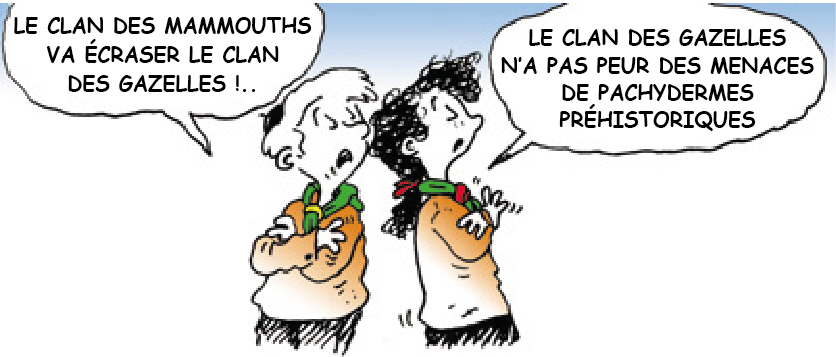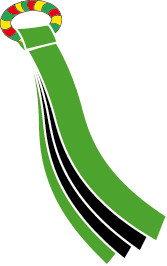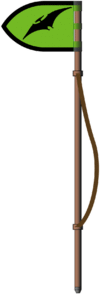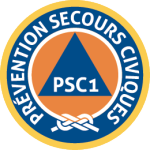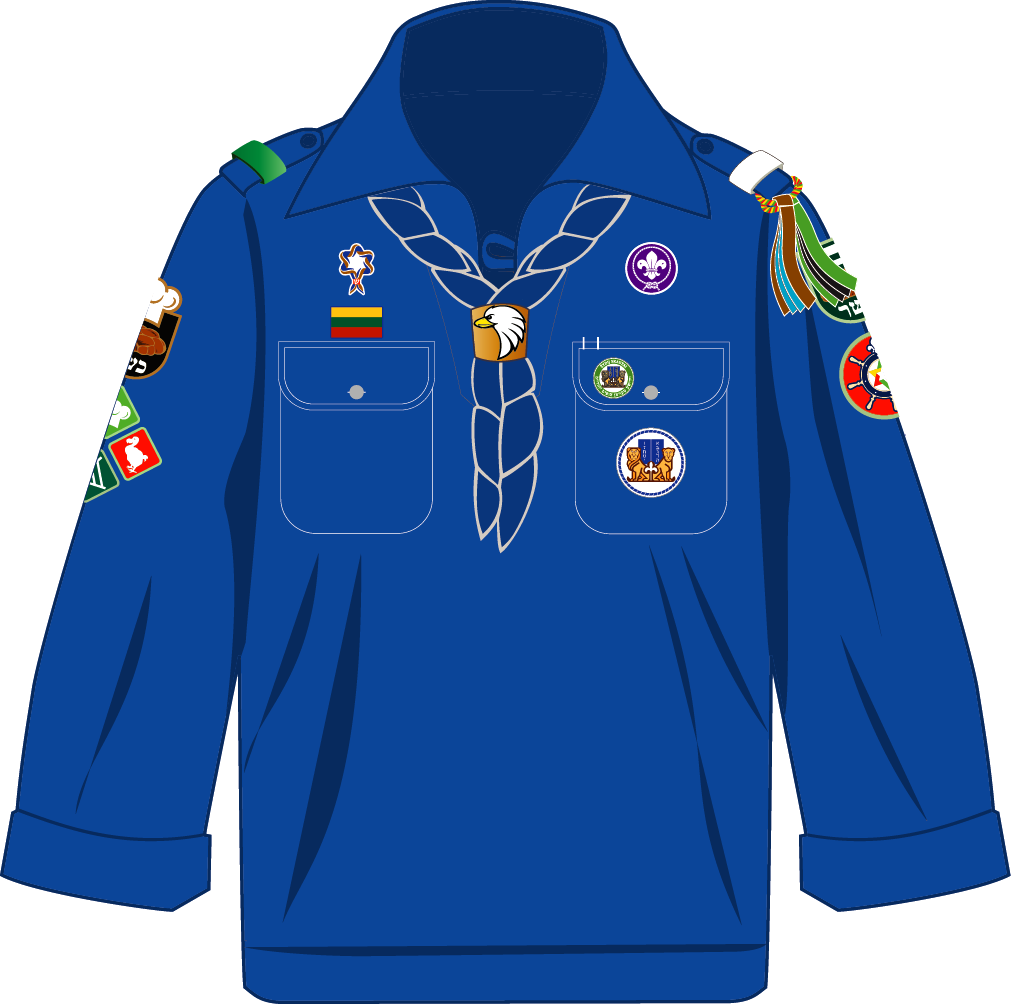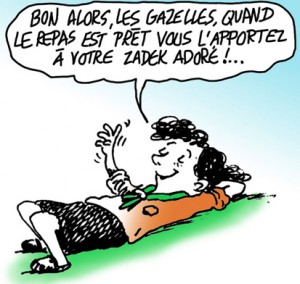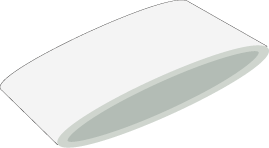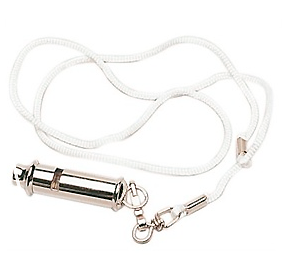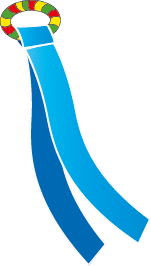The Patrol System is the one essential feature in which Scout training differs from that of all other organizations, and where the System is properly applied, it is absolutely bound to bring success. It cannot help itself! The formation of the boys into Patrols of from six to eight and training them as separate units each under its own responsible leader is the key to a good Troop." (Baden-Powell)
"The patrol system is not one method in which Scouting for boys can be carried on. It is the only method." (Baden-Powell)
The word clan comes from the Scottish Gaelic word clann which means « family, descends« . We will use this word to name the Tsofim Yehudim patrols/teams since it is quite similar in many languages.
At the time of the Hebrews, the Clan (משפחה michpara, family in Hebrew) was the fundamental unit and the Tribe (שבט chevet, tribe in Hebrew) was formed by the union of several clans.
Jacob had twelve sons. The offspring of each these men became the twelve tribes (shevatim) of the nation of Israel. Although all the tribes are part of one nation, each tribe (shevet) has unique characteristics.
• Shevet is the name of the Tsofim regional groups (Israeli scouts).
• Tribe is also the name of the 12-14 year old units of Scouts and Guides of France (SGDF).
The Scout Shevet (tribe) is made up of clans of boy scouts and clans of girl scouts (six to eight scouts per clan).
These clans are led by Clan Leaders who are selected from the oldest and most experienced scouts of the Shevet. They are trained for their function at the beginning of each year at regional or national level.
The clans are formed in September to the summer camp of the following year. The summer camp usually lasts three weeks and brings together tribes from different towns or countries.
Clan Name
Clans names and related colors are proposed for patrols by Baden-Powell in « Scouting for Boys ».
William Hillcourt goes on in his handbook to say:
“If you are starting out in a new Patrol, take plenty of time and give plenty of thought to a name, so that you’ll be positive that you get one with real meaning to every Scout in the Patrol.”
and:
“Good advice on getting a suitable name is this: Take it easy! Take your time before you make your decision. If you do that, the name is certain to come to you, and when you get it, it will be exactly what you want.”
This is the key here – the name must have a real meaning to every Scout. A good name is more than just something to call the Clan: it stands for something real. In this case, that’s the identity of the Clan as a group. It’s worth taking some time to discover the best solution embody that group. They need to be able to ‘own’ the name and make it theirs.
It isn’t a stretch to say that a good Clan name is one of the most important aspects of working the Patrol method.
1. A good Clan name builds the unique identity of the Clan and makes it something that can really be taken on.
2. A good Clan name should be specific and form a key part of the Scouts’ vision for their Clan.
3. The Clan named should be both lived as a group and taken on by the individual.
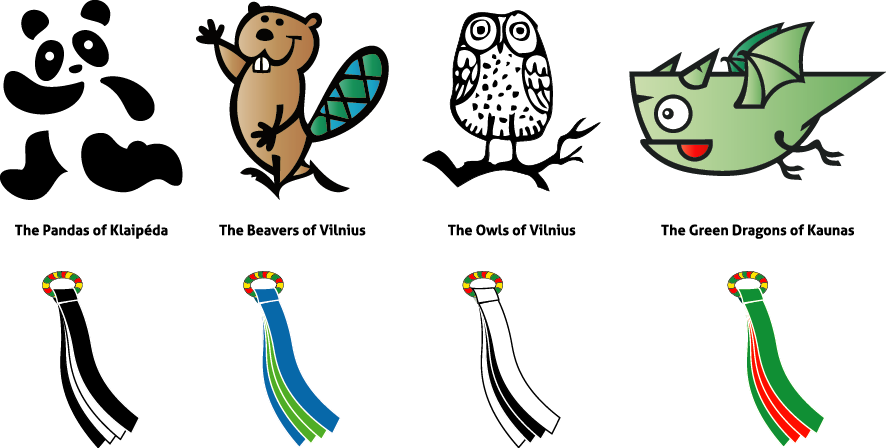
Names & Shoulder Knots of the four Lithuanian Clans
Shoulder Knot
Clans names and related colors are proposed for patrols by Baden-Powell in « Scouting for Boys ».
Each clan is identified by the wearing of Shoulder Knot with two specific colors. Clan’s Shoulder Knots are composed of two cotton ribbons (around 12cm length) in the two colors of the clan folded in two and stitched leaving the passage for a tricolor cord (yellow, green, red, the three historic colors of different Scout sections).
This cord allows to hang the Shoulder Knot to the left epaulette of the chultsa (shirt/jumper in Hebrew) — The cord’s knot is hidden in the loop formed by the two ribbons.
Clan Flag
Each clan has a Clan Flag on which appears its “totem“ (animal) in its related colors..
- The color of the outer shoulder knot is that of the clan flag (the most visible)
- The color of the inner shoulder knot is that of the border of the clan pennant.
“Shevet” or Tribe used in the sense of Tribal Chief (Parashat Nitzavim-Vayelekh)
Badges of Office (Positions of Responsibility)
Badge of Office is sewn 2 cm from the shoulder seam of the left sleeve.
Each Scout has a responsibility to keep in his/her clan for a whole scout year , summer camp included. These are the Badges of Office. You may change your role in the clan the following year. These Badges of Office allow the clans to be more autonomous, and thus fully live the Scout Adventure.
The various responsabilities in the clan are discussed and distributed at the beginning of the year in Clan Council. Training sessions for these various positions are organized by the madrichim at the beginning of the year.
For each responsibility in the clan, there is a madrich serving as reference to answer all your questions and help you if you need it. He wears the same badge as you.
In the clans, the Badges of Office work in pairs, including – where possible – the scout in charge of the mission and a younger scout who is trained for the following year.
- Quartermaster
- Grubmaster & Kashrut
- Scribe & Reporter
- Jewish Life
- First Aid, Hygiene & Health — à partir de 15 ans, avoir :
— Le Brevet européen de premiers secours (BEPS) en Europe
— Le PSC 1 en France
Clan Leader
“The more responsibility the Scoutmaster gives his patrol leaders, the more they will respond.” (Baden-Powell)
Each clan is under the responsibility of a Clan Leader, assisted by an Assistant Clan Leader.
The Clan Leader is a Senior Scout more experienced than the others, able to lead a team.
The Clan Leader is a Magen Scout.
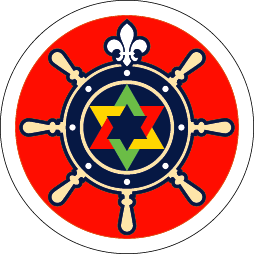 It is not because one is a Magen Scout that one is obligatorily named Clan Leader. It is also necessary to have other qualities and skills to create a good atmosphere in the Clan, so that everyone can find his place and take responsibility for projects and activities.
It is not because one is a Magen Scout that one is obligatorily named Clan Leader. It is also necessary to have other qualities and skills to create a good atmosphere in the Clan, so that everyone can find his place and take responsibility for projects and activities.
- Being a Clan Leader is knowing how to organize the life of the clan, in particular to ensure the proper functioning of the responsabilities chosen by the scouts at the beginning of the year.
- Being a Clan Leader is knowing how to be the spokesperson for the scouts of his Clan at the Shevet Council.
Clan leaders receive specific training at the beginning of the year in which they will exercise this responsibility.
Clan Leader wear:
– a white loop slipped into the left shoulder of the chultsa (shirt/jumper in Hebrew).
– A scout whistle. Clan leaders wear around their necks a scout whistle hanging on the end of a white cord.
This cord is usually made of a white lanyard that wraps around the scarf. Its length allows the whistle to fit in the right pocket of the chultsa for easy use.
The scout whistle is not a gadget but an important element of the security of an active clan: clan members must be trained to gather very quickly to the signal whistled by their clan leader.
Venture Patrol
The Senior Scouts are members of the Venture Patrol of the Shevet. As its name suggests, the Venture Patrol is exploring new horizons with age-appropriate activities for the oldest scouts (from 15 years old).
Click on the titles to open the corresponding pages:
– Grouping, calls and signals
From the earliest years of scouting, Baden-Powell created a special and secret call for Scouts all over the world to be able to quickly recognize themselves wherever they are. This call is composed of ten notes.
Les scouts se servent de ce signe international pour signaler leur position. Cet appel peut être sifflé ou chanté. Lorsqu’on entend l’appel scout, on y répond en répétant l’appel et en accourant dans la direction dont il provient.
Scouts use this international sign to signal their position. This call can be whistled or sung. When you hear the scout call, you answer it by repeating the call and running in the direction from which it came.
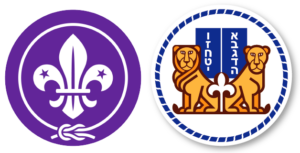
Tsofim Yehudim, L’Dor VaDor
Jewish Scouts, from generation to generation

